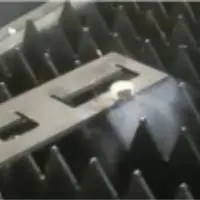****
Mild steel plate cutting machines play a crucial role in the manufacturing and fabrication industries by providing precise and efficient cutting solutions. As a versatile material, mild steel is commonly used in a variety of applications ranging from construction to automotive manufacturing. The development of advanced cutting technology has significantly enhanced the efficiency and accuracy of processing mild steel plates, making these machines indispensable in modern industry. This article explores the advantages, technologies, and applications of mild steel plate cutting machines in detail.
Understanding Mild Steel and Its Applications
Mild steel, also known as low carbon steel, has a carbon content of around 0.05% to 0.25%. This type of steel is favored in many industrial applications due to its ductility, weldability, and affordability. Common uses of mild steel include structural beams, plates for machining, automotive frames, and components in shipbuilding, among others. Given its extensive use, the ability to accurately cut mild steel plates is essential in ensuring the final product meets the desired specifications.
The Importance of Plate Cutting in Manufacturing
The process of cutting mild steel plates is fundamental in metalworking, serving as a prelude to fabrication and assembly. Proper cutting ensures that the tolerances and dimensions comply with engineering standards. The techniques employed in cutting can vary based on the machine used, thickness of the steel plate, and specific requirements of the project. In this regard, mild steel plate cutting machines are designed to cater to various needs, including complex shapes, varying thicknesses, and surface finishes.
Advantages of Mild Steel Plate Cutting Machines

Exploring the Advantages and Applications of Mild Steel Plate Cutting Machines in Modern Manufacturing Processes
1. **Precision and Accuracy**: Modern cutting machines employ advanced technologies such as laser cutting, plasma cutting, and water jet cutting. These methods enable precision cuts that minimize material wastage and ensure that tolerances are maintained.
2. **Increased Efficiency**: Automation in mild steel plate cutting machines has drastically improved productivity. Automated systems can operate continuously with minimal downtime, allowing manufacturers to increase output without sacrificing quality.
3. **Versatility**: Mild steel plate cutting machines are capable of handling a wide range of plate sizes and thicknesses, making them suitable for a variety of projects. Whether it is a large-scale industrial job or a smaller fabrication project, these machines can adapt accordingly.
4. **Reduced Labor Costs**: The automation and efficiency of cutting machines reduce the need for manual labor. This not only cuts labor costs but also minimizes the risk of human error during the cutting process.
5. **Quality Surface Finish**: Advanced cutting technologies provide a cleaner and smoother finish on the cut edges of mild steel plates. This quality finish reduces the need for secondary finishing processes, thus saving time and resources.

Exploring the Advantages and Applications of Mild Steel Plate Cutting Machines in Modern Manufacturing Processes
Technologies Used in Mild Steel Plate Cutting Machines
1. **Laser Cutting**: This technique uses concentrated beams of light to melt or vaporize the material. Laser cutting is known for its high precision and ability to cut intricate designs, making it ideal for applications that require complex shapes.
2. **Plasma Cutting**: Plasma cutting uses a high-velocity jet of ionized gas to cut through metals. It is particularly effective for thicker plates and is noted for its speed and efficiency.
3. **Water Jet Cutting**: Water jet cutting employs a high-pressure stream of water mixed with abrasives to pierce through materials. This method is advantageous for cutting materials that are heat-sensitive, as it doesn’t generate thermal distortion.
4. **Shearing**: A traditional method, shearing involves applying mechanical force to cut through sheets of metal. This technique is cost-effective for simple straight cuts and large volumes.
Applications of Mild Steel Plate Cutting Machines
Mild steel plate cutting machines are employed across various sectors, including:

Exploring the Advantages and Applications of Mild Steel Plate Cutting Machines in Modern Manufacturing Processes
– **Construction**: For structural components such as beams, columns, and reinforcements.
– **Automotive**: In the production of vehicle frames and body parts.
– **Shipbuilding**: Where large steel plates are cut to create hulls and other structural elements.
– **Fabrication Shops**: For custom projects that require tailored cuts.
– **Energy Sector**: Used in creating equipment for renewable energy sources, including wind and solar power systems.
Conclusion
In conclusion, mild steel plate cutting machines are indispensable in today’s manufacturing landscape. Their ability to provide precision, efficiency, and versatility makes them crucial for various industries that rely on mild steel for construction and fabrication. As cutting technologies continue to advance, the capabilities of these machines will further enhance, paving the way for innovative applications and improved manufacturing processes. Investing in high-quality cutting machines can yield significant benefits for businesses, ensuring they stay competitive in an ever-evolving market. Fiber Laser Machine For Cutting Metal




